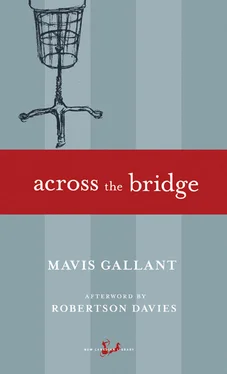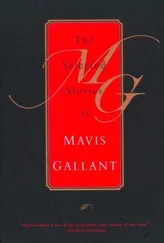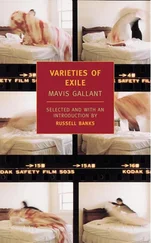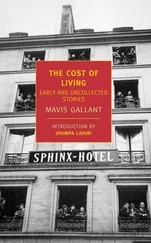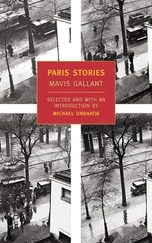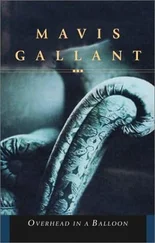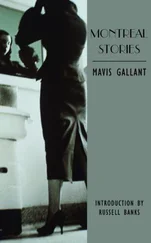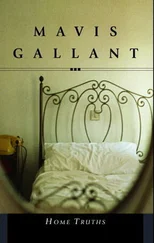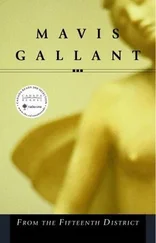Mavis Gallant
Across the Bridge
The following dedication appeared in the original edition:
To
Kitty Crowe
ABOUT A YEAR after the death of M. Carette, his three survivors — Berthe and her little sister, Marie, and their mother — had to leave the comfortable flat over the furniture store in Rue Saint-Denis and move to a smaller place. They were not destitute: there was the insurance and the money from the sale of the store, but the man who had bought the store from the estate had not yet paid and they had to be careful.
Some of the lamps and end tables and upholstered chairs were sent to relatives, to be returned when the little girls grew up and got married. The rest of their things were carried by two small, bent men to the second floor of a stone house in Rue Cherrier near the Institute for the Deaf and Dumb. The men used an old horse and an open cart for the removal. They told Mme. Carette that they had never worked outside that quarter; they knew only some forty streets of Montreal but knew them thoroughly. On moving day, soft snow, like graying lace, fell. A patched tarpaulin protected the Carettes’ wine-red sofa with its border of silk fringe, the children’s brass bedstead, their mother’s walnut bed with the carved scallop shells, and the round oak table, smaller than the old one, at which they would now eat their meals. Mme. Carette told Berthe that her days of entertaining and cooking for guests were over. She was just twenty-seven.
They waited for the moving men in their new home, in scrubbed, empty rooms. They had already spread sheets of La Presse over the floors, in case the men tracked in snow. The curtains were hung, the cream-colored blinds pulled halfway down the sash windows. Coal had been delivered and was piled in the lean- to shed behind the kitchen. The range and the squat, round heater in the dining room issued tidal waves of dense metallic warmth.
The old place was at no distance. Parc Lafontaine, where the children had often been taken to play, was just along the street. By walking an extra few minutes, Mme. Carette could patronize the same butcher and grocer as before. The same horse-drawn sleighs would bring bread, milk, and coal to the door. Still, the quiet stone houses, the absence of heavy traffic and shops made Rue Cherrier seem like a foreign country.
Change, death, absence — the adult mysteries — kept the children awake. From their new bedroom they heard the clang of the first streetcar at dawn — a thrilling chord, metal on metal, that faded slowly. They would have jumped up and dressed at once, but to their mother this was still the middle of the night. Presently, a new, continuous sound moved in the waking streets, like a murmur of leaves. From the confused rustle broke distinct impressions: an alarm clock, a man speaking, someone’s radio. Marie wanted to talk and sing. Berthe had to invent stories to keep her quiet. Once she had placed her hand over Marie’s mouth and been cruelly bitten.
They slept on a horsehair mattress, which had a summer and a winter side, and was turned twice a year. The beautiful stitching at the edge of the sheets and pillows was their mother’s work. She had begun to sew her trousseau at the age of eleven; her early life was spent in preparation for a wedding. Above the girls’ bed hung a gilt crucifix with a withered spray of box hedge that passed for the Easter palms of Jerusalem.
Marie was afraid to go to the bathroom alone after dark. Berthe asked if she expected to see their father’s ghost, but Marie could not say: she did not yet know whether a ghost and the dark meant the same thing. Berthe was obliged to get up at night and accompany her along the passage. The hall light shone out of a blue glass tulip set upon a column painted to look like marble. Berthe could just reach it on tiptoe; Marie not at all.
Marie would have left the bathroom door open for company, but Berthe knew that such intimacy was improper. Although her First Communion was being delayed because Mme. Carette wanted the two sisters to come to the altar together, she had been to practice confession. Unfortunately, she had soon run out of invented sins. Her confessor seemed to think there should be more: he asked if she and her little sister had ever been in a bathroom with the door shut, and warned her of grievous fault.
On their way back to bed, Berthe unhooked a calendar on which was a picture of a family of rabbits riding a toboggan. She pretended to read stories about the rabbits and presently both she and Marie fell asleep.
They never saw their mother wearing a bathrobe. As soon as Mme. Carette got up she dressed herself in clothes that were in the colors of half-mourning — mauve, dove-gray. Her fair hair was brushed straight and subdued under a net. She took a brush to everything — hair, floors, the children’s elbows, the kitchen chairs. Her scent was of Baby’s Own soap and Florida Water. When she bent to kiss the children, a cameo dangled from a chain. She trained the girls not to lie, or point, or gobble their food, or show their legs above the knee, or leave fingerprints on windowpanes, or handle the parlor curtains — the slightest touch could crease the lace, she said. They learned to say in English, “I don’t understand” and “I don’t know” and “No, thank you.” That was all the English anyone needed between Rue Saint-Denis and Parc Lafontaine.
In the dining room, where she kept her sewing machine, Mme. Carette held the treadle still, rested a hand on the stopped wheel. “What are you doing in the parlor?” she called. “Are you touching the curtains?” Marie had been spitting on the window and drawing her finger through the spit. Berthe, trying to clean the mess with her flannelette petticoat, said, “Marie’s just been standing here saying ‘Saint Marguerite, pray for us.’ ”
Downstairs lived M. Grosjean, the landlord, with his Irish wife and an Airedale named Arno. Arno understood English and French; Mme. Grosjean could only speak English. She loved Arno and was afraid he would run away: he was a restless dog who liked to be doing something all the time. Sometimes M. Grosjean took him to Parc Lafontaine and they played at retrieving a collapsed and bitten tennis ball. Arno was trained to obey both “Cherchez! ” and “Go fetch it!” but he paid attention to neither. He ran with the ball and Mme. Grosjean had to chase him.
Mme. Grosjean stood outside the house on the back step, just under the Carettes’ kitchen window, holding Arno’s supper. She wailed, “Arno, where have you got to?” M. Grosjean had probably taken Arno for a walk. He made it a point never to say where he was going: he did not think it a good thing to let women know much.
Mme. Grosjean and Mme. Carette were the same age, but they never became friends. Mme. Carette would say no more than a few negative things in English (“No, thank you” and “I don’t know” and “I don’t understand”) and Mme. Grosjean could not work up the conversation. Mme. Carette had a word with Berthe about Irish marriages: An Irish marriage, while not to be sought, need not be scorned. The Irish were not English. God had sent them to Canada to keep people from marrying Protestants.
That winter the girls wore white leggings and mittens, knitted by their mother, and coats and hats of white rabbit fur. Each of them carried a rabbit muff. Marie cried when Berthe had to go to school. On Sunday afternoons they played with Arno and M. Grosjean. He tried to take their picture but it wasn’t easy. The girls stood on the front steps, hand-in-hand, mitten-to-mitten, while Arno was harnessed to a sled with curved runners. The red harness had once been worn by another Airedale, Ruby, who was smarter even than Arno.
Читать дальше
